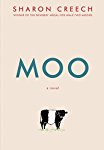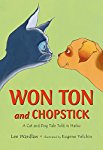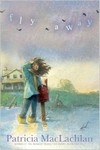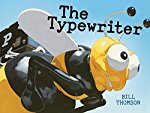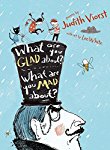Many people imagine that writing the text for a children's picture book story is easy. It isn't. Writing the text for a picture book story that is going to convey a 'message' is even harder. How does one share a message without being didactic or preachy? In today's picture book the author beautifully conveys a powerful message to her readers by giving us a storybook character who is engaging and lovable. Who can resist a giant who is essentially kind but who, like us, makes mistakes sometimes. We feel sorry for the giant and hope that he can fix the problems that he has created. We want to read on because we want the giant to have the happy ending that we feel he deserves.
 The lonely giant
The lonely giant
 The lonely giant
The lonely giant
Sophie Ambrose
Picture Book
For ages 5 to 7
Candlewick Press, 2016, 978-0-7636-8225-5
In the middle of a huge forest, on top of a crag, there
is a cave, and in the cave there lives a giant. Every day the giant does what
all giants do: he pulls up trees “as though they were weeds” and throws them,
and he has a grand time “smashing and mashing” the mountains.
Not surprisingly,
the giant’s destructive activities begin to take a toll on the environment
around him. The animals move away, and the forest gets “smaller and smaller”
until all that is left are a few trees, no animals, and a lot of quiet. The
“songs of the forest” have disappeared, and the giant realizes that his world
is no longer the place that he loved. In the quiet he gets lonelier and
lonelier.
Then one day the
giant see a little yellow bird and he is delighted when she sings to him. So
happy is he that he catches the bird, puts her in a cage, and carries the cage
up to his cave. The problem is that the bird does not like to be caged, and
soon she is so sad that she does not sing at all. The giant knows that there is
only one thing to do, and he frees the little bird, who flies away and
disappears. The giant is alone once more.
We like to think
that the things we do only affect us, but the truth of the matter is that our
actions often affect the people and the places around us. The giant in this
story learns, the hard way, that his tree-throwing and mountain smashing
activities come with a price. The question is, what is he going to do about it?
With great skill
the author of this book brings us a story that is simple and yet powerful. We
see very clearly how a beautiful place can be changed when it is ill-used, and
we see too how owning up to our mistakes can bring about change for the better.
